Best Exercises for Ankylosing Spondylitis
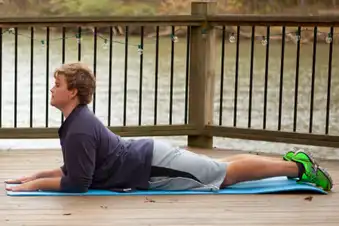
Press Up to Stretch Your Spine
Ankylosing spondylitis (AS) can shorten the spine and muscles in your back. Stretch with this move to help "rounded" back and back pain.
Lie on your stomach with your legs behind you. Slowly prop yourself up on your elbows so your chest is off the ground. If you’re able, straighten your arms. Hold for 10 to 20 seconds. Repeat 3-5 times.
Do this move once a day.

Wall Sit for Better Posture
Stand with your back against a wall. Put your feet shoulder-width apart, and away from the wall. Slowly slide your back down the wall. It may take time, but work towards being able to get to the point where your thighs are parallel with the floor -- like you're sitting in a chair. Hold for 5 to 10 seconds. Hold for longer as you get stronger.
Repeat 3-5 times. Do 3 to 5 times a week.
Exercising muscles that AS affects -- in your back, shoulders, neck, butt, and hips -- can help you move more easily.
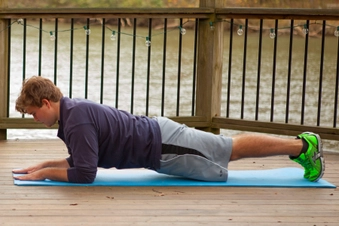
Plank for a Stronger Core
To make sure you're strong enough for this exercise, start in a standing position with your feet flat on the floor and your forearms on the kitchen counter.
Once you can do that fairly easily, move on to the harder version. Your stomach, back, and butt muscles help your posture. Work them with this move -- no crunches needed! Kneel on a mat. Put your forearms on the ground. Push your legs out behind you and balance on your toes. Squeeze your stomach and butt muscles to hold your body in a straight line. Don't crane your head up or let it hang down. Keep your neck in line with your spine. Hold for 5 seconds. Repeat 3-5 times. Add more time as you become stronger. Always keep your core tight. Do this 3 to 5 times a week.

Try Standing Leg Raises to Loosen Tight Hips
Hold the back of a chair or railing. Keep your back straight with a slight bend in your knees. Slowly lift one leg out to the side so it's a few inches off the ground. Then lower it back to the starting position.
Next, kick the same leg straight behind you to 45 degrees. Remember to keep good posture. Avoid bending over at the waist. Repeat 10 to 15 times on each leg.
Do this move 3 to 5 times a week.
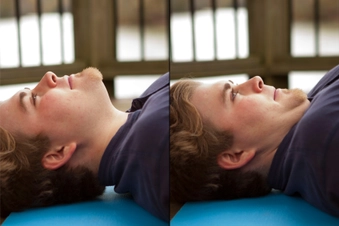
Do Chin Tucks to Stretch Your Neck
AS can make you lean forward. That can cause your neck to get tight and give you headaches. This move can strengthen your neck to keep you upright and relieve tightness.
Lie on your back. Without lifting your head off the floor, tuck your chin in slightly toward your chest. Hold for 5 to 10 seconds. Repeat 3 to 5 times.
Do this stretch twice a day.
Uncomfortable? Try a small, rolled-up towel under your neck for support.

Roll Your Shoulders to Loosen Up
Stand or sit up tall. Keep your spine as straight as you're comfortably able to. Gently shrug your shoulders up toward your ears, then move your shoulders back and down. You can feel this in your upper back. Think about pulling your shoulder blades together and down in a rolling motion. Then pull your shoulders back up toward your ears. Repeat 5 to 10 times.
Do this stretch daily.
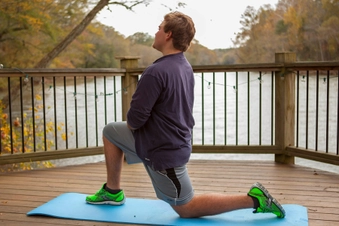
Stretch Your Hips to Ease Low Back Pain
This lengthens the muscles at the front of your hips. They connect to your lower back.
Take a big step forward. Sink into a lunge: Move your back knee down and rest it on the ground. Keep your back upright. Be mindful not to bend forward at the hips. You should feel this stretch in your back leg (the one that is resting on the ground). You'll feel it on the front of the thigh and hip.
To get a deeper stretch, gently push both your hips forward. Hold for 20-30 seconds. Repeat with your other leg. Hold a chair for balance if needed.
Do this stretch daily.

Corner Stretch to Open Your Chest
Find a corner and stand facing it. Raise your arms up. Rest the palms of your hands on the walls. Gently press your chest toward the corner. Your arms will provide tension. You'll feel the stretch across the front of your chest. Along your back, you'll feel your shoulder blades move toward each other. Hold for 20 to 30 seconds.
Do this stretch daily.
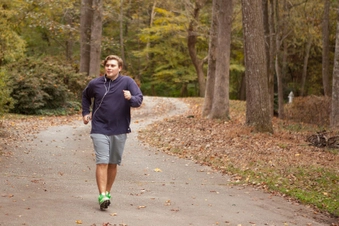
Walk, Move
Exercise can ease pain and inflammation. When you boost your heart rate, it also makes feel-good chemicals in your body. Any exercise is great. But you get a bonus from doing weight-bearing exercise -- when your joints have to support your weight, like when you walk instead of swim. It helps "feed" the cartilage in your joints and spine. Get your heart pumping most days of the week. Start with 5 to 10 minutes a day. Try to work up to 30 minutes or more. It’s OK to do 5 to 10 minutes at a time, a few times a day. It adds up!
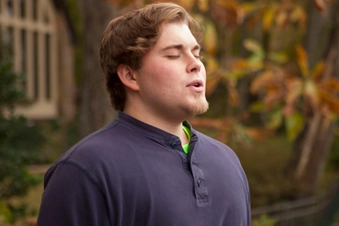
Take Deep Breaths
Many people with AS eventually notice that they have trouble fully expanding their ribs and chest while they breathe. But deep-breathing exercises can help prevent this problem.
Several times a day, take 3 to 4 deep breaths. Focus on pulling air deep into your chest as you inhale. Then, exhale slowly.
Show Sources
IMAGES PROVIDED BY:
1) Anna Webb / WebMD
2) Anna Webb / WebMD
3) Anna Webb / WebMD
4) Anna Webb / WebMD
5) Anna Webb / WebMD
6) Anna Webb / WebMD
7) Anna Webb / WebMD
8) Anna Webb / WebMD
9) Anna Webb / WebMD
10) Anna Webb / WebMD
SOURCES:
Eric Robertson, PT, DPT, spokesperson for the American Physical Therapy Organization; director of the Kaiser Permanente Hayward Fellowship in Advanced Manual Orthopaedic Therapy.
NIH: National Institute of Arthritis and Musculoskeletal and Skin Diseases: “Cartilage Disorders.”
Fernandez deLas Penas, C. American Journal of Physical Medicine Rehabilitation, July 2006.